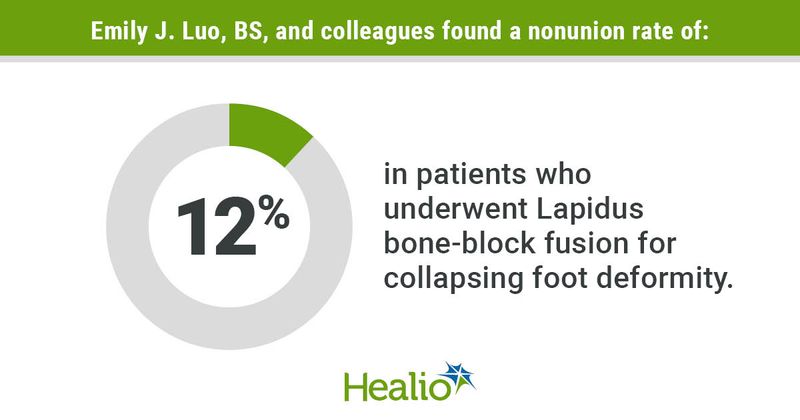Lapidus bone-block fusion yielded high nonunion rate for collapsing foot deformity
Key takeaways:
- Lapidus bone-block fusion yielded a minor complication rate of 3% and a major complication rate of 6%.
- Patients experienced a nonunion rate of 12%.
SAN FRANCISCO — Results presented here showed Lapidus bone-block fusion had a high nonunion rate despite restoring many markers associated with foot collapse and alignment.
Emily J. Luo, BS, and colleagues collected nonunion rates, complications and bone healing on weight-bearing CT for 69 feet with either progressive collapsing foot deformity, hallux valgus or midfoot arthritis that underwent a Lapidus bone-block fusion, also known as the LapiCotton procedure, between August 2020 and November 2022. Researchers also collected forefoot arch angle, Meary’s angle, talonavicular coverage angle, middle facet subluxation, and foot and ankle offset.

“Complication rates were 3% for minor complications and 6% for major, including three deep infections and one [extensor hallucis longus] EHL contracture,” Luo said in her presentation at the American Academy of Orthopaedic Surgeons Annual Meeting.

Patients had a nonunion rate of 12%, as well as a bone healing rate on weight-bearing CT of 87% at 3 months and 79% at most recent follow-up, according to Luo. She added the LapiCotton procedure improved forefoot arch angle, Meary’s angle, middle facet subluxation and talonavicular coverage angle.
“With foot and ankle offset, our alignment improved from a more valgus alignment to within a normal range,” Luo said.

